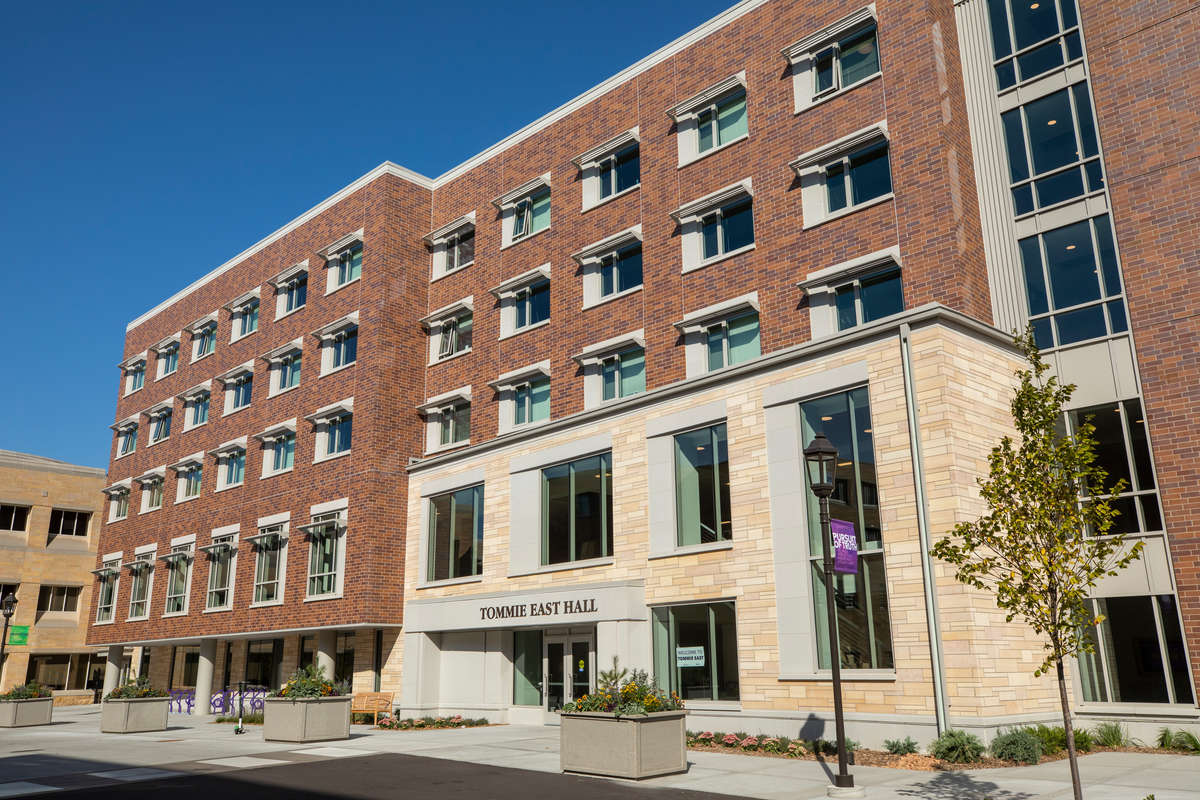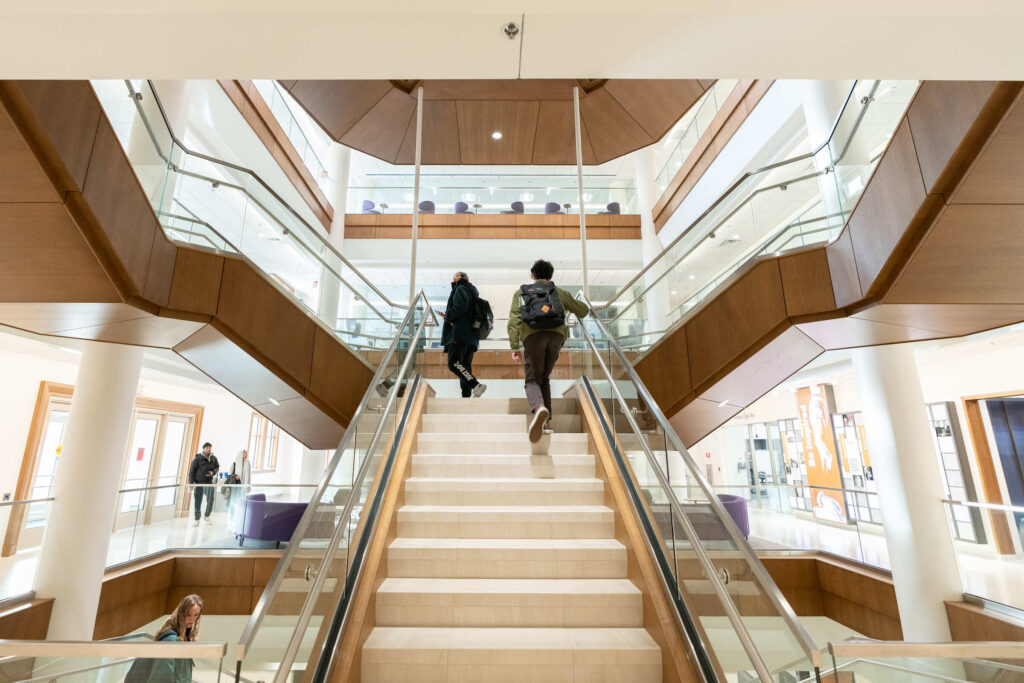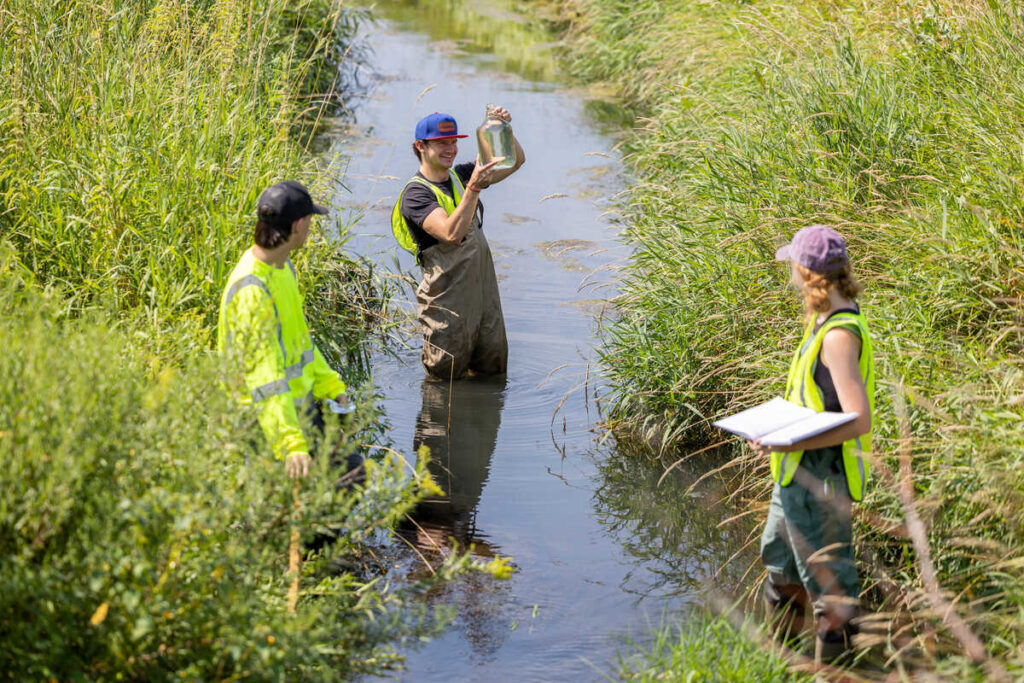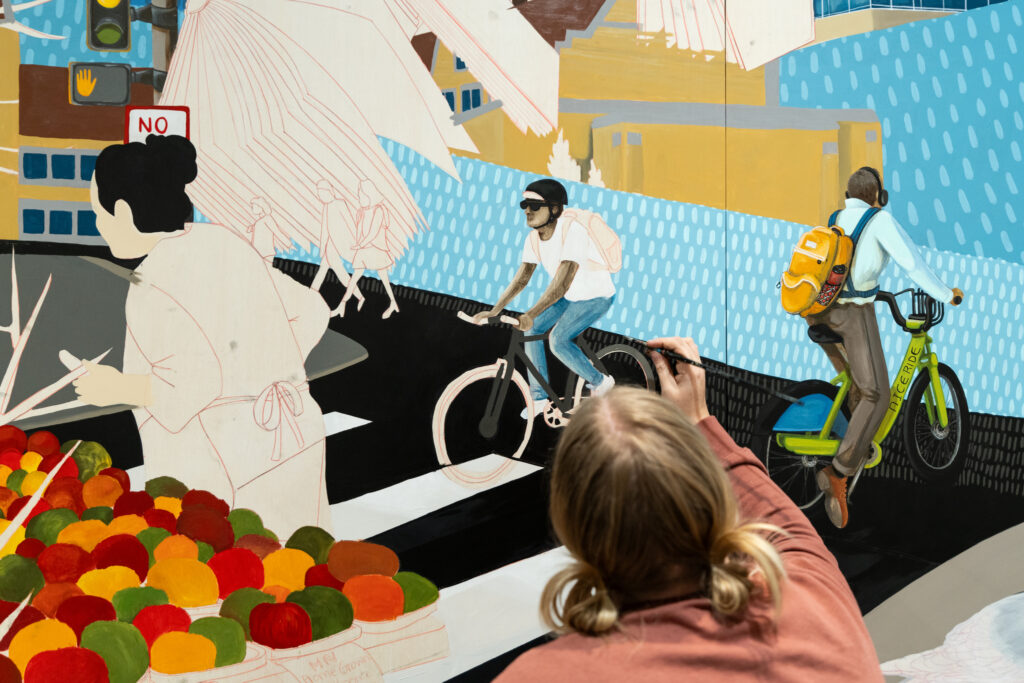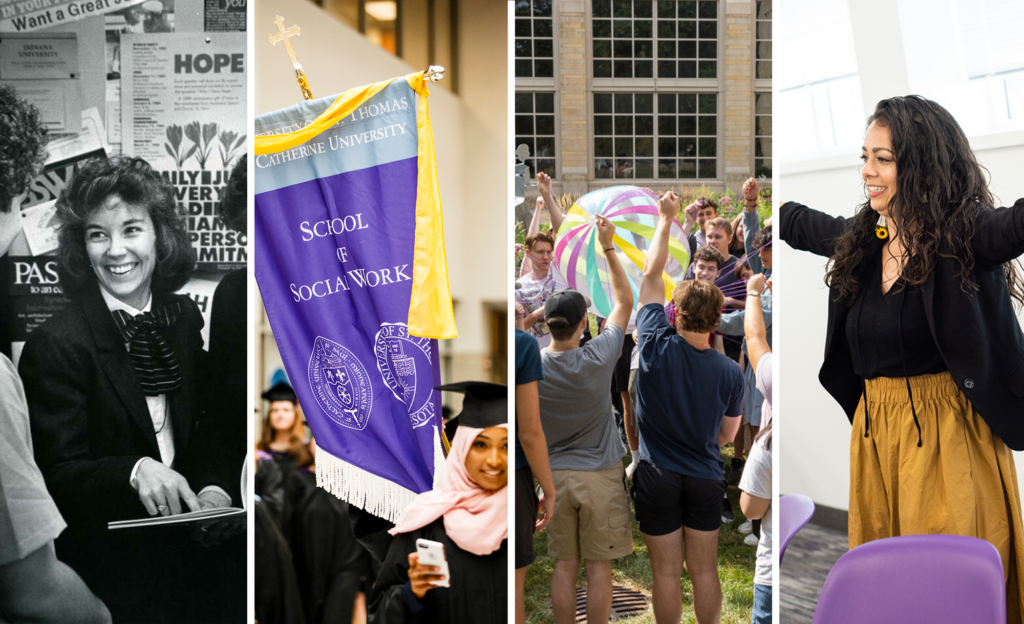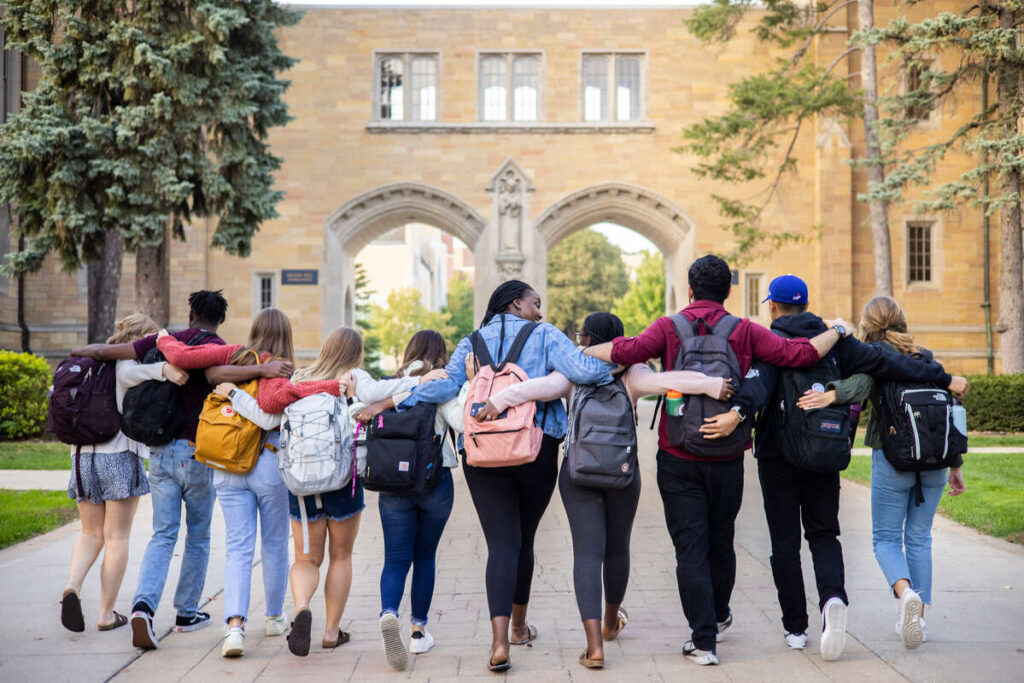U.S. Green Building Council (USGBC) – a nonprofit that promotes sustainable building design – has awarded its highest rating to the new residence hall. Tommie East is the first building in its category in the Midwest to achieve the LEED® (Leadership in Energy and Environmental Design) v4 Platinum certification.
It’s also the sixth building in its category in the country – and seventh in the world – to achieve the rating.
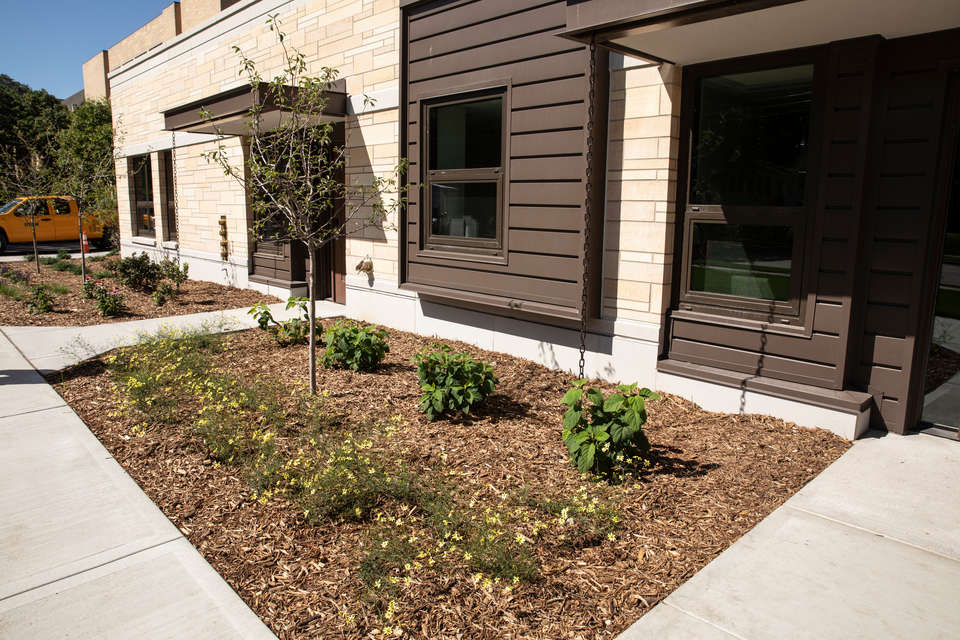
Perennial gardens outside Tommie East Residence Hall.
“We, at St. Thomas, know our facilities are world class, but it is not every day that the most widely used green building rating system in the world recognizes you as one of the best,” said President Julie Sullivan. “Our commitment to sustainability is rooted in Catholic social teaching and Pope Francis’ call for us to respect our interdependency with one another and future generations as we commit to protecting and sustaining our common home. Tommie East’s sustainable design is one example of how we can truly live our convictions.”
LEED is the most widely used green building rating system in the world and is considered an international symbol of excellence. It tells students and other stakeholders that a building has gone through a rigorous third-party verification and that the work meets high green building standards related to energy, water, indoor environmental quality and more. LEED buildings are designed to be operationally efficient and support human and environmental health.
“Achieving LEED certification is more than just implementing sustainable practices. It represents a commitment to making the world a better place and influencing others to do better,” said USGBC President-CEO Mahesh Ramanujam. “Given the extraordinary importance of climate protection and the central role buildings play in that effort, St. Thomas is creating a path forward through their LEED certification.”
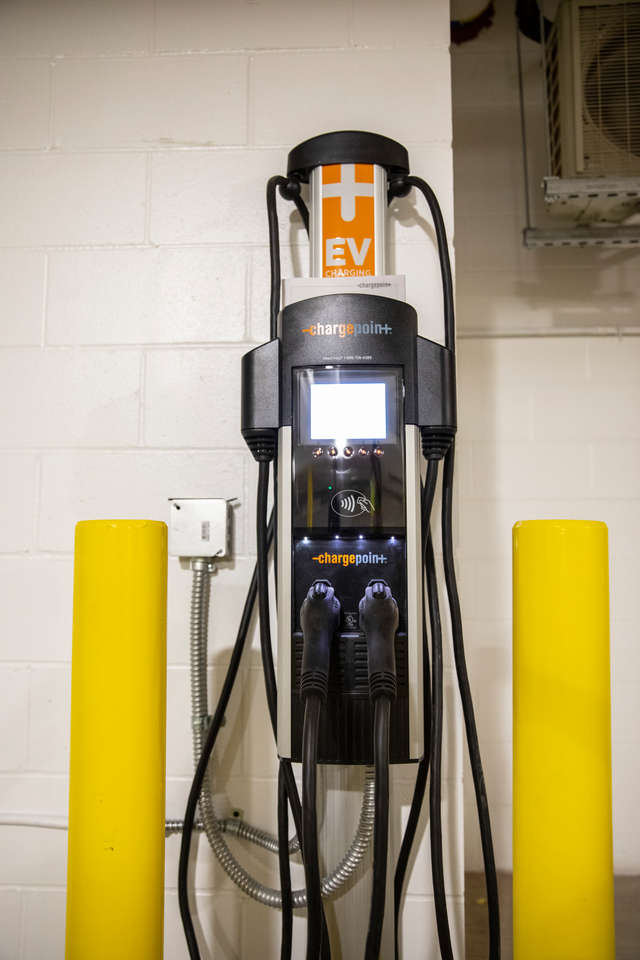
An electric vehicle charging station in the Tommie East parking garage.
Designing new buildings for LEED certification is part of the university’s larger plan to achieve carbon neutrality by 2035. Over the past decade, St. Thomas has reduced carbon emissions by 37% by implementing a variety of energy conservation measures in new and existing buildings. As part of its larger sustainability initiative, the university is designing all new buildings larger than 25,000 square feet to a minimum of LEED Silver standards. It also calls for integrating sustainability into its residence halls by reducing waste, conserving energy and water, and measuring its progress.
St. Thomas also achieved a STARS (Sustainability Tracking, Assessment and Rating System) Silver rating in 2018, is listed on the Princeton Review’s Guide to Green Colleges, and has received three marks of distinction from the Climate Leadership Network.
“Preparing our students to be sustainability leaders is central to the university’s mission to advance the common good,” said Amir Nadav, assistant director of campus sustainability. “St. Thomas works to infuse sustainability into our academics, culture and operations while catalyzing engagement across the university. Tommie East reflects the university’s commitment and provides a unique opportunity for students to live in, and learn from, a high-performance building. We hope that students’ experiences at St. Thomas will empower and inspire them to champion sustainability in their own lives and future careers.”
St. Thomas opened the five-story, 139,300-square-foot residence hall – which can house up to 260 students – in fall 2020 as part of many transformative upgrades to the St. Paul campus.
Designed by ESG Architecture & Design, Tommie East received high marks for several features, including:
- Energy efficiency above industry standards
- The use of electric vehicle charging stations
- Collection of compostable waste
- An irrigation metering system
- High-efficiency appliances and low-flow water fixtures
- Access to green spaces
- Access to bicycle and public transit
- An underground rainwater infiltration system
- Over 8,000 square feet of vegetated roof area
- Carpet made from recycled content
Tommie East is officially categorized under Building Design and Construction: Multifamily Midrise in the USGBC’s LEED database.
The on-time completion of the project was particularly impressive given construction wrapped up in the middle of the COVID-19 pandemic.
One of the most significant challenges during the pandemic was the need to safely distance on-site workers who needed to complete tasks in small spaces. This required altering schedules to limit the number of workers assigned to these jobs, which prolonged completion. Despite this obstacle, the residence hall was finished in time for students to move in by fall 2020.
"When we take on a project, we strive for outcomes measurably better than yesterday's,” said Eric Engh, senior vice president of construction at Ryan Companies. “The University of St. Thomas’ commitment to advanced green building standards became ours and we couldn’t have checked all the boxes without the trust and commitment between everyone involved.”
